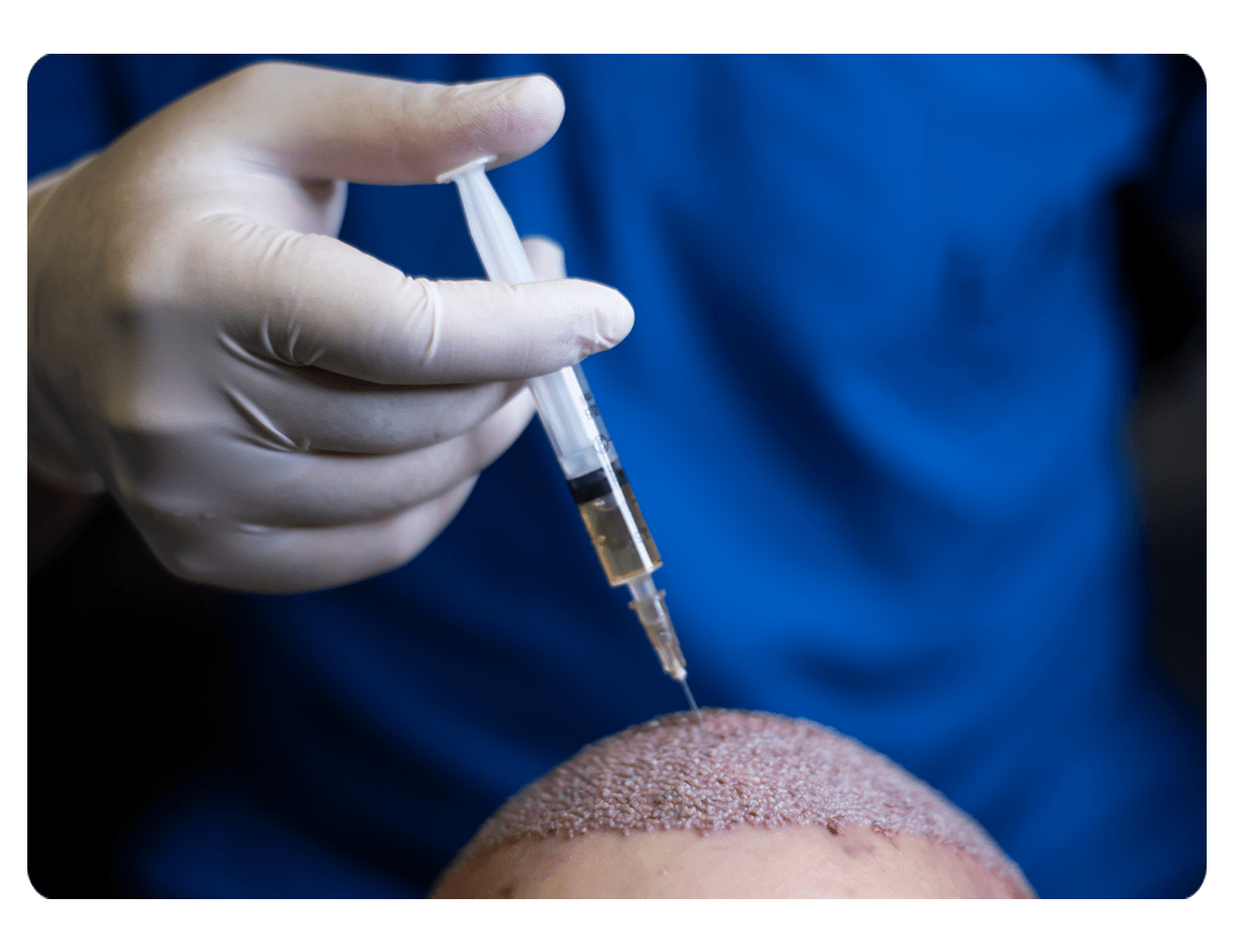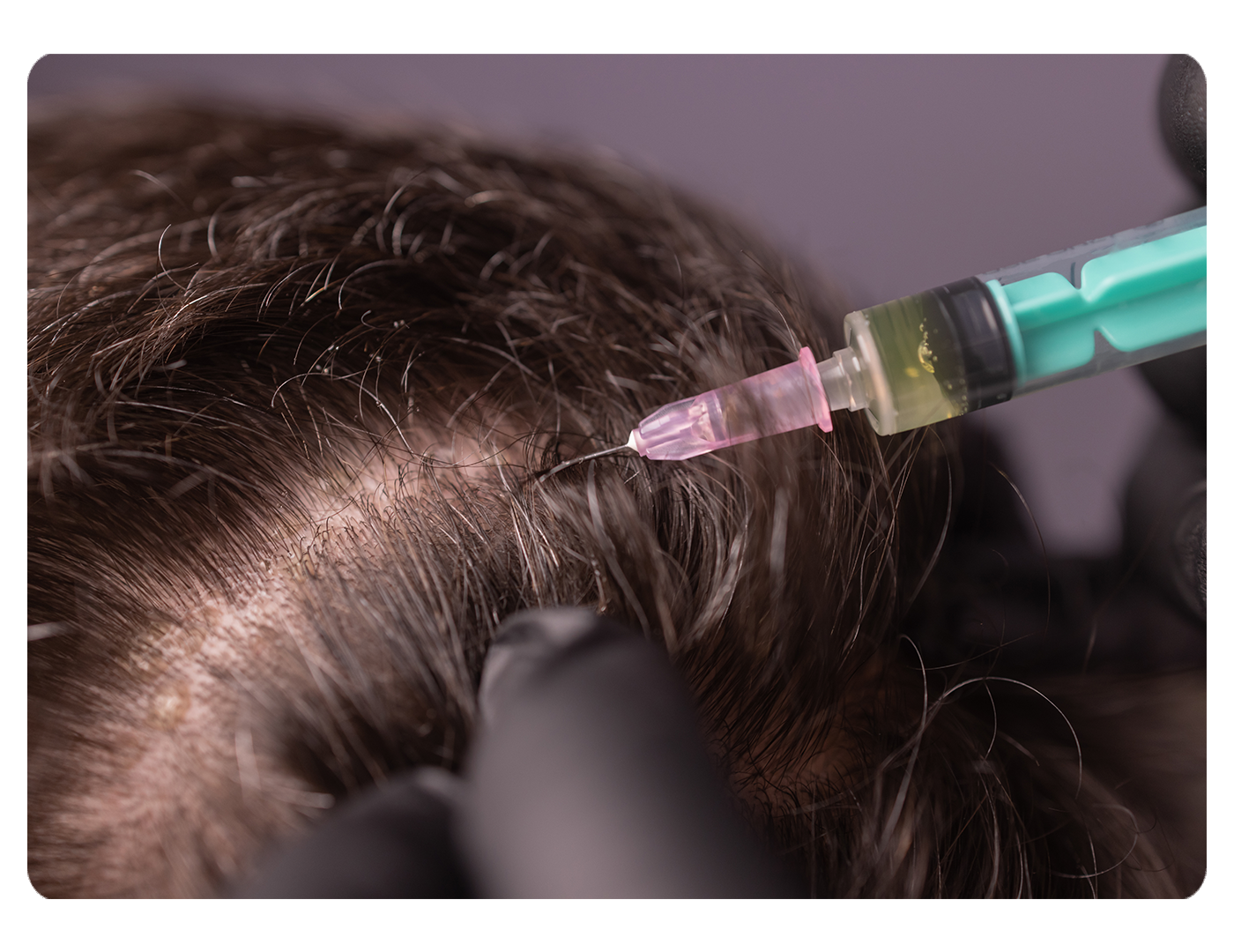
WHAT IS PRP ?
PRP, which is the most effective treatment of non-operative hair treatments, is a type of treatment that is applied to revitalize and repair hair follicles that are shedding and weakened. This treatment, which is made by injecting the beneficial vitamins and minerals obtained with the person's blood into the person's hair, is completely organic and does not contain any chemicals.
PRP is particularly successful in combating hair loss caused by genetic factors. The process begins with a simple blood draw, where approximately 10 cc of blood is taken from the patient. This blood is then processed in a laboratory using a centrifuge to separate the red and white blood cells. The platelets, which are rich in growth factors, are extracted and injected into the scalp, targeting the areas that need rejuvenation.
While PRP is safe for many, certain individuals should avoid this treatment. Those with a family history of cancer, those taking blood-thinning medications, or those with scalp infections should not undergo PRP. In addition, pregnant or breastfeeding women and individuals with blood disorders are not suitable candidates for this procedure.


The frequency of PRP treatments may vary based on individual factors such as hair follicle quality, hair strand strength, and whether or not PRP has been previously applied. Typically, the procedure takes approximately thirty minutes and is performed every months for a total treatment duration of five to six months. Most patients begin to see results after their third session.
One of the key benefits of PRP is that it uses growth factors and proteins from the patient's own blood. As such, the treatment is well tolerated with minimal side effects. Some patients may experience minor redness or bruising at the injection sites, which can be relieved with a cold compress.
It's important to note that anti-inflammatory medications should be avoided after treatment, as they can decrease the effectiveness of PRP. Instead, over-the-counter pain relievers such as paracetamol are recommended. On the day of the procedure, it's best to avoid hot showers and direct sunlight to minimize discomfort.PRP can also complement hair transplant surgery. By revitalizing and strengthening the hair roots prior to the procedure, PRP improves the overall outcome. In addition, during the post-operative phase, it can accelerate healing and strengthen newly transplanted hair follicles, promoting better results. .



